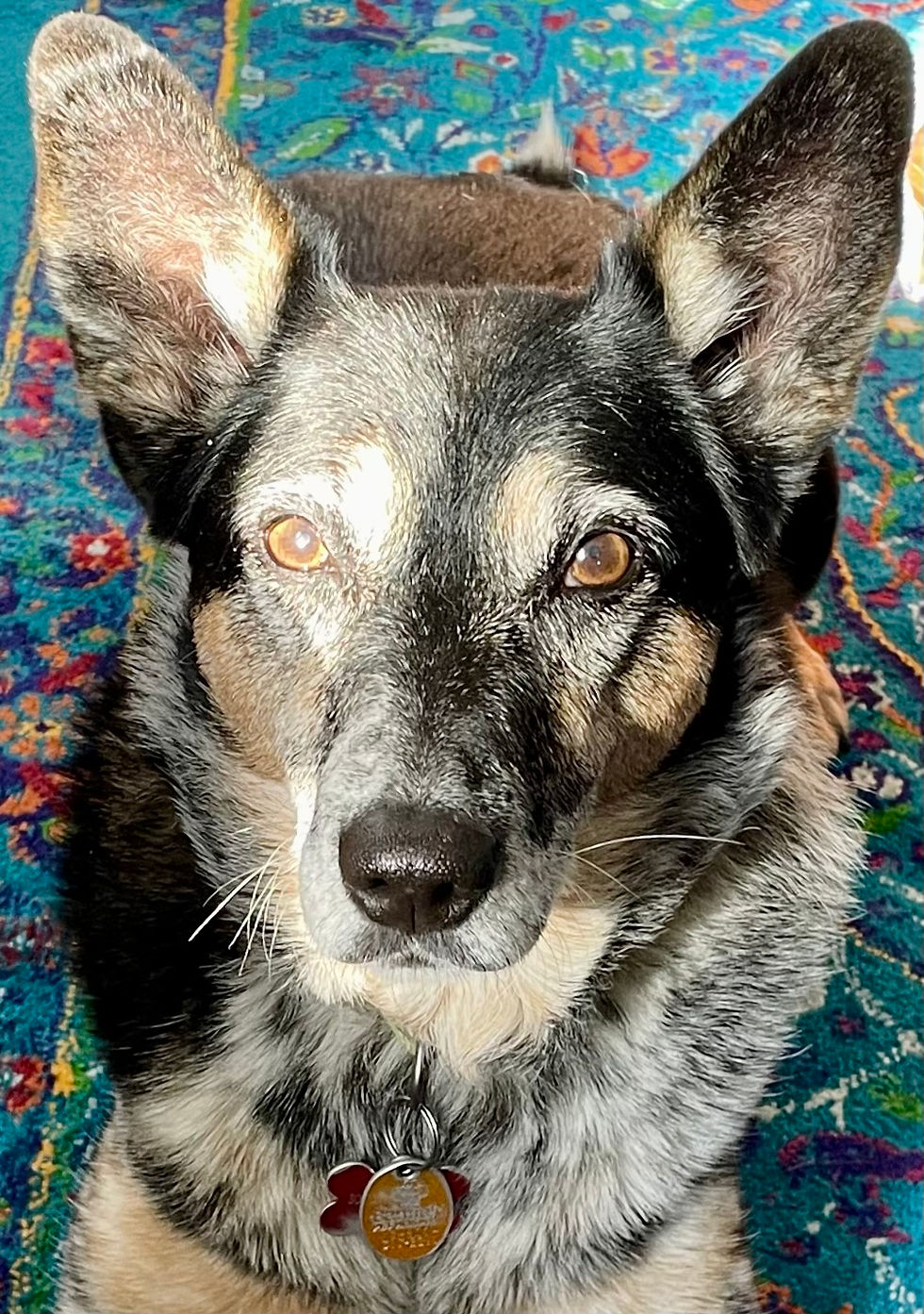Creating Calmer Leash Walks
- Virginia Dare

- Apr 16
- 3 min read

Taking our dogs for walks is good for both ends of the leash -- we get exercise and our dogs enjoy all the enrichment our walking environments have to offer. But in anticipation of this fun activity, many dogs works themselves up into a joyful tizzy and this sure doesn't set the stage for a calm walking experience.
So how do we create calmer walks? We need to teach our dogs that all steps leading to a walk are achieved only when calm behavior is displayed. Let's take a closer look...
Human preparation:
If your dog can read the signs that a walk is imminent when you begin to don your shoes or coat, that's a great starting point. Begin to practice donning your shoes or coat separate from any walks (doing this randomly throughout the day) and simply work on rewarding your dog for remaining calm. For example, you could ask your dog to sit, then pick up a shoe, then give them a treat if they maintain their sit position calmly. Then you can put the shoe on, again rewarding when the dog remains seated and calm. If they get excited, calmly pause whatever you're doing, wait quietly until they sit again, then continue with training. By making each step small and rewarding throughout the process, your dog is more likely to be successful. And as they improve, you can gradually begin to fade the number of treats needed during your preparation for the walk.
Equipment donning:
Next step is picking up the leash (and any other equipment your dog normally wears for walks). Just like above, your dog needs to learn to sit and wait calmly while you clip it on. Take your time with this, remain calm yourself, and reward each success with a treat. At first, it can be helpful to practice this leashing skill well away from the usual location, as that area may be already associated with lots of excitement. Plan to do this equipment-donning work randomly throughout the day when you're not actually going for a walk.
Door etiquette:
Once the leash is on, your next step will be opening the door and here, too, your dog will need to learn to be calm in order to get permission to pass through the door. I have a separate article that addresses this particular exercise, so please check that out!
Getting outside:
Once the dog maintains calm behavior to get permission to pass through the door, you should expect a need to pause just outside the door to address any resurgence of excitement. Every step of the process should be promoting calm behavior.
By reducing excitement levels before a walk begins, you're more likely to have a walk with less pulling and excitability. Of course, dogs will also need consistent instruction about how to walk on a loose leash, but here are a few more tips that can make that process easier:
Exercise your energetic dog before a walk to burn off some excess energy.
Carry very yummy treats on walks so you can reward loose leash walking.
Use occasional food scatters on the ground to help slow your dog down and engage his nose in a calming activity.
Consider using a slightly longer leash for casual walks as a way of reducing the frequency of a tight leash. I wrote an article at this which you can check that out here.
If you're in need of any training or behavior assistance, including how to
make walks with your dog more enjoyable, please get in touch.
I'd love to help you reach your goals! My email is virginiadare2013@gmail.com.



Comments